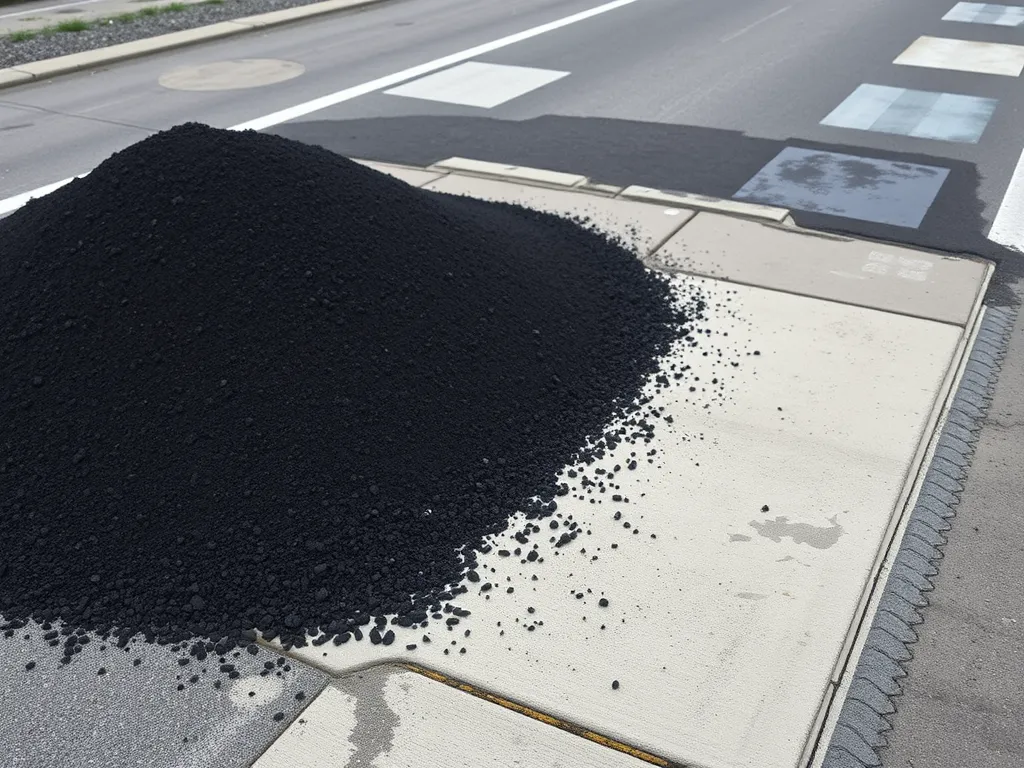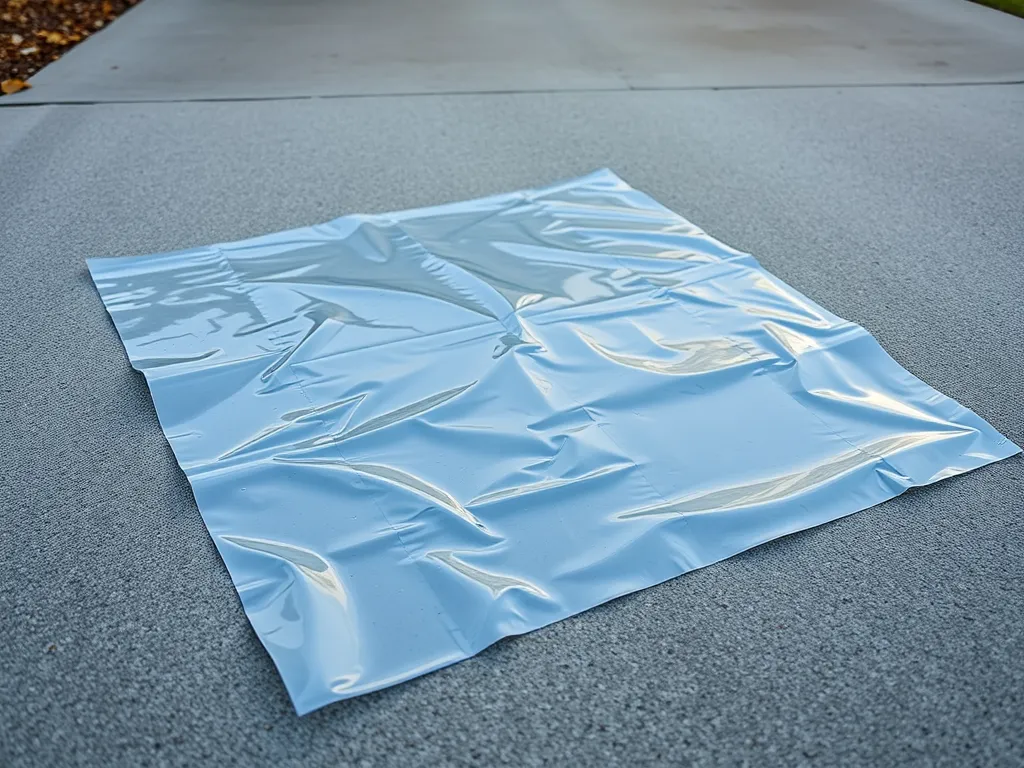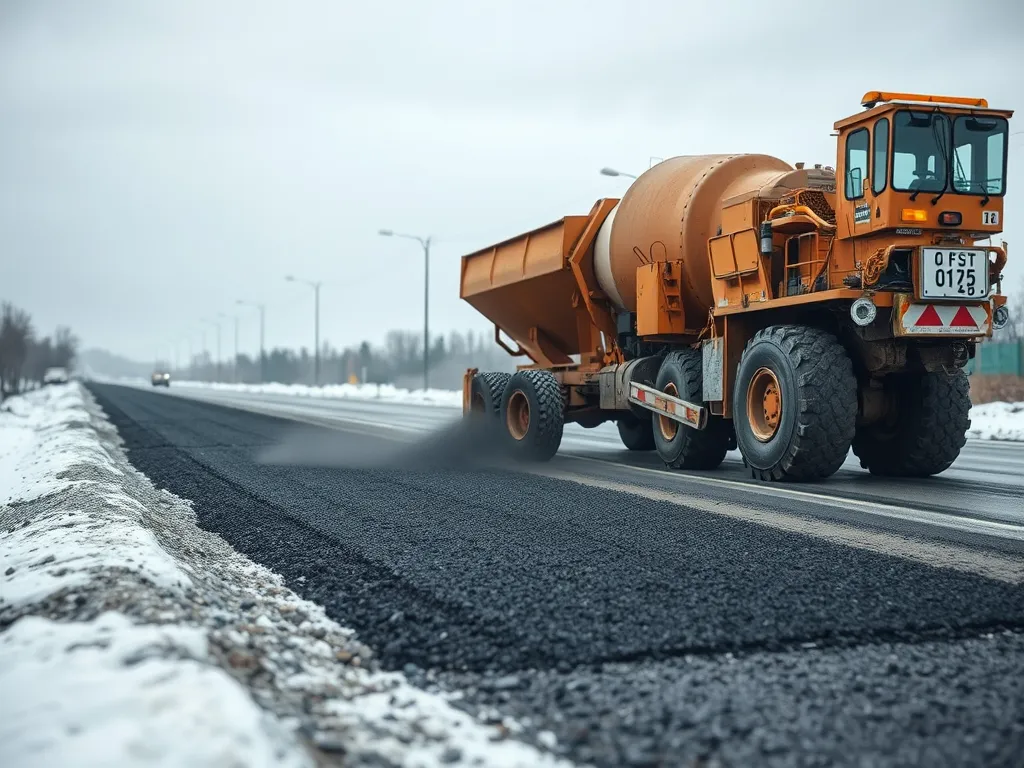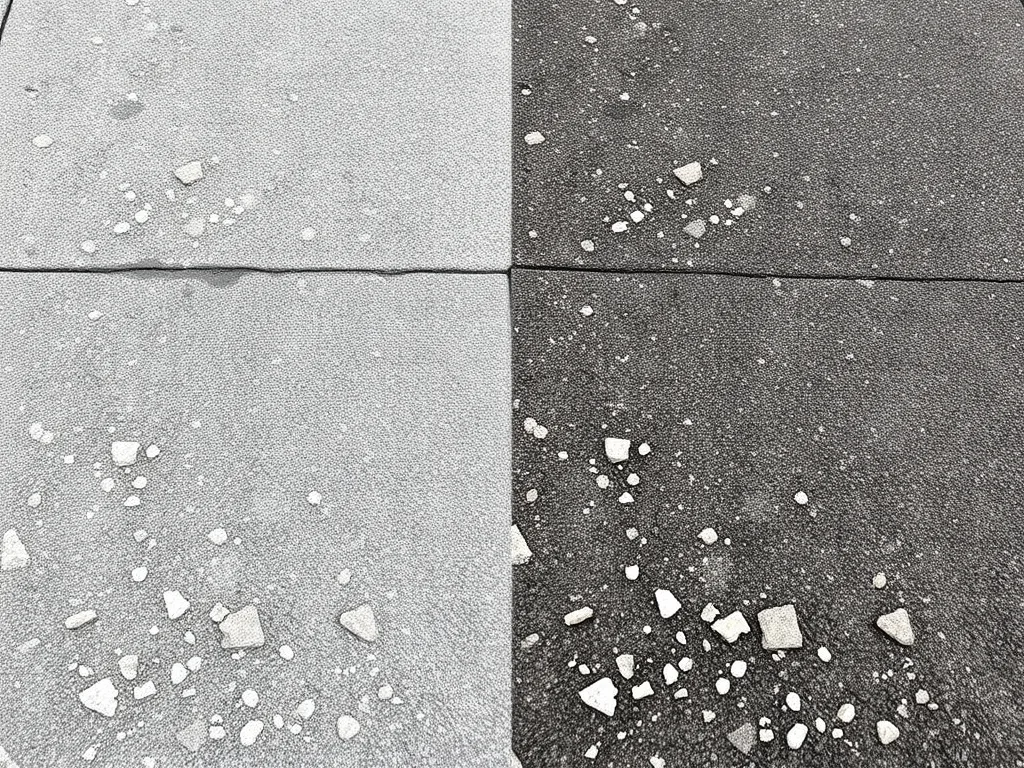Cold Mix Asphalt Application in Winter: Best Practices & Guidelines
Published on: October 14, 2025 | Last Updated: April 14, 2025
Written By: George Voss
Cold mix asphalt application in winter uses pre-mixed aggregates coated with bitumen emulsion to repair roads, driveways, and potholes without heat. Unlike hot mix asphalt requiring 300°F+ temperatures, cold mix stays pliable in freezing conditions—even below 20°F—making it the only asphalt product viable for winter use. It bonds to wet surfaces, cures slowly through evaporation, and provides temporary fixes until permanent repairs in warmer months. Key challenges include extended curing times (up to 7 days) and reduced durability if compacted improperly.
This article explains how to apply cold mix asphalt effectively during winter. Topics include temperature limits, surface preparation steps like debris removal and crack cleaning, and tools like infrared thermometers or cold weather additives. You’ll learn compaction techniques using hand tampers or vibrating plates, compare cold mix to hot asphalt or concrete, and find answers to common issues like hardening delays or springtime deterioration.
Contents
- Introduction to Cold Mix Asphalt Winter Applications
- Key Benefits Of Cold Mix Asphalt in Winter
- Temperature Guidelines for Winter Application
- Preparing Surfaces for Cold Mix Asphalt in Winter
- Step-by-step Application Process
- Challenges Of Cold Mix Asphalt Winter Use
- Tools and Materials for Winter-specific Applications
- Comparing Cold Mix to Other Winter Solutions
- Environmental Considerations
- Frequently Asked Questions (FAQ)
- Closing Thoughts
- Additional Resources for You:
Introduction to Cold Mix Asphalt Winter Applications
Cold mix asphalt is a pre-mixed combination of aggregates, bitumen emulsion, and additives designed for low-temperature use. Unlike hot mix asphalt, it requires no heating before application. This makes it ideal for winter repairs when traditional methods fail. The blend contains specialized polymers and anti-strip agents to improve adhesion in cold, wet conditions.
Can You Apply Cold Mix Asphalt During Winter?
Yes. Cold mix asphalt winter application is feasible at temperatures as low as 20°F (-6°C). Its unique formulation allows placement even in snow or light rain. The material remains pliable until compacted, enabling workability in subfreezing conditions. ASTM D4215-certified mixes ensure consistent performance for driveways, roads, and potholes.
Key factors for success:
- Surface preparation: Remove ice, debris, and standing water
- Material storage: Keep bags above 15°F (-9°C) to prevent hardening
- Compaction: Use a vibratory plate compactor at ≥35°F (2°C) for proper density
Curing times range from 3-7 days depending on humidity and temperature fluctuations. Products like Coldappa WinterGrade include rapid-set additives that cut hardening time by 40% compared to standard mixes.
These advantages make cold mix a practical solution, but how does it perform under specific winter conditions? Let’s examine the temperature guidelines for optimal results.
Key Benefits Of Cold Mix Asphalt in Winter
Cold mix asphalt winter applications solve common seasonal challenges. This material performs when traditional methods fail. Let’s break down its core strengths.
Immediate Repairs in Suboptimal Conditions
Cold mix asphalt bonds effectively even when temperatures drop below freezing. Unlike hot mix, which requires specific thermal conditions, cold mix remains pliable in icy weather. Municipal crews use it to fill potholes during snowstorms. Homeowners fix cracked driveways without waiting for spring. Its emulsion-based formula ensures bonding despite moisture or frost.
No Heating Required for Application
Eliminating heating equipment slashes project timelines. Cold mix asphalt winter projects skip energy-intensive processes, reducing costs by up to 40%. PG binders—performance-graded polymers—keep the mix workable without thermal activation. Stockpile bags in your truck bed; apply straight from the container. This makes it ideal for remote sites lacking power sources.
Versatility for Driveways, Roads, and Potholes
From residential patches to highway fixes, cold mix adapts. Its granular composition suits uneven surfaces like utility cuts or eroded shoulders. Contractors rely on it for temporary road repairs before permanent summer overlays. DIYers tackle garage aprons or sidewalk edges with basic tools. One product handles cracks under 2 inches, potholes up to 6 inches deep, and full-depth pavement failures.
With these benefits clarified, let’s examine how temperature ranges impact success rates during cold mix asphalt placement winter projects.

Temperature Guidelines for Winter Application
Cold mix asphalt works in low temps, but strict heat rules apply. These rules affect bond strength, cure time, and patch life.
Minimum and Maximum Temperature Limits
Cold mix stays workable from 20°F to 50°F. Key points:
- Min temp: 20°F for most blends. Some new grades bond at 0°F with additives
- Max temp: 50°F. Warm days speed cure but risk cracks if mix dries too fast
What is the Coldest Temperature to Lay Asphalt?
0°F is the floor for cold mix asphalt winter use. Below 20°F needs:
- Pre-heated aggregate (120°F) in the mix
- PG 64-34 polymer binders for flex
- Sand or grit for ice grip
How Weather Impacts Adhesion and Curing
Cold slows cure and weakens bonds. Watch for:
- Snow/ice: Scrape off before patching. Wet spots cause 30% less grip
- Wind: Over 15 mph dries surface in 10 mins. Mist with water to delay skin set
- Damp air: Cure time jumps from 24 hrs to 48+ hrs at 80% humidity
For strong winter holds, clean ground and dry holes are key. Next: steps to prep surfaces right.
Also See: Benefits Of Investing in Quality Asphalt Tools
Preparing Surfaces for Cold Mix Asphalt in Winter
Surface prep sets the stage for successful cold mix asphalt application winter projects. Skipping steps risks premature failure, even with high-quality materials. Follow these protocols to maximize bond strength and longevity.
Cleaning Debris and Moisture Removal
Clear all loose rocks, leaves, and dirt with stiff brooms or air compressors. Remove standing water with squeegees—ice formation under layers weakens structural integrity. For frozen ground, apply calcium chloride pellets to melt frost down to 1″ depth. Surface temps below 25°F? Use infrared heaters briefly to eliminate residual dampness.
Proper Crack and Pothole Preparation
Square vertical edges of cracks with masonry chisels for better mechanical grip. Remove unstable material until reaching solid base layers. Deep voids exceeding 2″? Backfill with angular gravel (3/4″ size) as a stabilizing base. Spray PG 64-22 tack coat on prepared surfaces when temps dip below 20°F—this boosts adhesion by 30% in subfreezing conditions.
Ensuring Dry Surfaces Before Application
Moisture triggers binder separation in cold asphalt mix during winter. Test dryness by laying a 3’x3′ plastic sheet overnight—no condensation means go time. For driveways, run propane torches along damp spots at 12″ intervals. Avoid open flames on public roads; opt for electric thermal blankets rated for 150°F output. Let surfaces stabilize for 90 minutes post-drying before patching.
With surfaces prepped to spec, focus shifts to material handling and compaction tactics. Let’s break down the layering methods that lock durability into every repair.

Step-by-step Application Process
Cold mix asphalt winter jobs need careful steps for best results. Follow these steps to fix roads, driveways, or potholes in cold months.
Material Preparation and Storage Tips
Keep cold mix asphalt winter bags dry and stored above 40°F. Use pallets or racks to stop ground moisture. Break up clumps with a shovel before use. Add 1-2% polymer agents if temps drop below 20°F for better bond strength.
- Check bags for tears or ice before opening
- Warm mix in a heated shed (50-70°F) for 24 hours if frozen
- Toss old stock older than 6 months
Layering Techniques for Durability
Spread cold mix asphalt in winter with 2-inch layers max. Use a steel tamper to press each layer into cracks. For deep holes, build up in 1.5-inch lifts. Roughen old edges with a chisel to help new mix stick.
- Overfill holes by 0.5 inches for settling
- Slope patches away from center to shed water
- Wait 20 mins between layers for slight bonding
Compaction Methods in Cold Weather
Cold mix asphalt in winter needs 25% more force than summer jobs. Use vibratory plates, not hand tampers, for temps under 35°F. Make 5-7 passes across the patch. Check for gaps with a 6-inch straight edge.
- Heat plate base to 150°F if possible
- Compact within 10 mins of placement
- Avoid metal-on-metal hits to prevent cracks
How to Get Cold Patch Asphalt to Harden
Speed up cold mix asphalt winter curing with hot air blowers or infrared heaters. Spread black sand over patches to soak up sun heat. For fast fixes, spray light diesel fuel (5% mix) to soften binder before compacting.
- Use thermal blankets if temps hit 15°F or lower
- Add 10% hot mix asphalt as a top cap layer
- Block traffic for 48 hours when possible
While these steps boost cold mix asphalt winter performance, freeze-thaw cycles still pose risks. Next, we’ll break down key cold weather challenges and how to beat them.
Challenges Of Cold Mix Asphalt Winter Use
While cold mix asphalt offers winter flexibility, cold weather creates unique hurdles. Freezing temperatures, moisture control, and repair longevity require careful planning to avoid failed installations.
Durability Concerns in Freeze-thaw Cycles
Repeated freeze-thaw cycles test cold mix asphalt winter application. Water seeps into cracks, freezes, expands, and weakens the binder-aggregate bond. Standard cold mixes rated for -10°F to 50°F lose 15-20% compressive strength after five freeze-thaw cycles compared to hot mix. Emulsion-based formulas with PG 58-28 binders perform better but still require springtime reassessment.
Storage Requirements to Prevent Moisture Damage
Unopened cold asphalt mix winter bags need dry storage at 40°F to 80°F. Once exposed, the blend absorbs ambient moisture within 72 hours – even at 30% humidity. Contractors use heated storage trailers or seal unused material with moisture-barrier wraps. One study found improperly stored cold mix lost 40% adhesion strength when applied at 20°F.
| Storage Factor | Requirement |
|---|---|
| Temperature | 40°F – 80°F |
| Humidity | Below 50% RH |
| Shelf Life (Opened) | 48-72 Hours |
Temporary Vs. Permanent Repair Limitations
Cold mix during winter often serves as a temporary fix until hot mix plants reopen. Though some polymer-modified blends claim permanent status, repairs made below 35°F typically last 3-6 months versus 5-8 years for warm asphalt mix winter installations. High-traffic areas like intersections show 30% faster deterioration compared to residential driveways.
Next, let’s examine specialized tools and additives that boost cold mix asphalt winter performance. Proper equipment selection turns short-term patches into season-spanning solutions.

Tools and Materials for Winter-specific Applications
Winter repairs demand specialized gear and modified materials. Cold mix asphalt application in winter requires tools that handle low-temperature challenges while maintaining material integrity. Proper selection ensures efficient patching even when thermometers drop below freezing.
Essential Equipment for Cold Weather Patching
Effective winter repairs rely on three core tools: heavy-duty tampers, steel-handled rakes, and infrared thermometers. Gas-powered tampers weighing 50-75 lbs provide optimal compaction force for cold mix asphalt in winter. Infrared thermometers monitor surface temps, ensuring they stay above 20°F – the threshold for adhesion. Steel-handled tools prevent brittleness common in plastic variants at freezing temps.
| Tool | Purpose |
|---|---|
| Propane Torch | Pre-wets surfaces to 40-50°F |
| Polymeric Bonding Spray | Boosts aggregate-bitumen adhesion |
| Insulated Storage Bins | Keeps mix pliable down to -10°F |
Cold Mix Additives for Enhanced Performance
Winter-grade formulas contain 3-5% additives by weight. Polymer-modified binders like SBS (styrene-butadiene-styrene) improve flexibility at -20°F. Anti-stripping agents – typically amine-based compounds – combat moisture damage during freeze-thaw cycles. Some blends incorporate EVA (ethylene-vinyl acetate) to accelerate curing times by 30% at 32°F.
| Additive | Impact |
|---|---|
| Calcium Chloride | Lowers freeze point to -25°F |
| Crumb Rubber | Adds elasticity for 2x crack resistance |
| Hydrated Lime | Reduces stripping by 40% |
Material choices directly affect repair longevity. Next, we’ll examine how these winter-specific solutions stack against traditional hot mix and concrete alternatives.
Comparing Cold Mix to Other Winter Solutions
Winter road repairs need fast, reliable fixes. Cold mix asphalt stands out but faces competition. Let’s break down key options.
Cold Mix Vs. Hot Mix Asphalt in Winter
Hot mix asphalt (HMA) needs 290-330°F temps during mixing. In winter, plants shut down below 50°F. Cold mix uses emulsified binders and works at 20°F. No heat means no delays. HMA costs $120-$150 per ton. Cold mix runs $80-$100 per ton with no plant fees. For potholes or cracks in snow zones, cold mix wins on speed and cost.
- Hot Mix: Needs dry, warm ground. Cures fast but can’t bond under 40°F
- Cold Mix: Bonds in wet, icy cracks. Sets via traffic compression
Cold Mix Vs. Concrete for Emergency Repairs
Concrete takes 24-48 hours to cure. Freezing temps ruin its strength. Cold mix hardens in 1-2 hours, even at 15°F. A 12” deep pothole filled with concrete costs $250+. Cold mix costs $30-$50 for the same fix. Trucks can roll over cold mix patches right away. Concrete needs barricades for days. For urgent road or drive fixes, cold mix cuts downtime and labor.
- Concrete: Lasts 20+ years but fails if poured under 40°F
- Cold Mix: Lasts 1-3 years but works in sleet, snow, ice
Next, let’s explore how eco-friendly choices shape winter paving plans.

Environmental Considerations
Cold mix asphalt winter application supports sustainable practices while addressing urgent repair needs. Its unique formulation aligns with modern environmental goals.
Eco-friendly Aspects Of Cold Mix Asphalt
Cold mix asphalt requires 50% less energy than hot mix production. Traditional hot mix plants operate at 300°F+, emitting 20-30 lbs of CO2 per ton. Cold mix uses ambient temperatures, cutting emissions by 40%. PG (Performance-Graded) binders in cold mix reduce volatile organic compounds (VOCs) by 15% compared to conventional asphalt cement.
Recycled asphalt pavement (RAP) constitutes up to 30% of cold mix blends. This diverts 1.2 million tons of material from landfills annually. Permeable cold mix variants allow 25% stormwater infiltration, reducing urban runoff. LEED-certified projects often specify cold mix for its lower environmental impact score (EIS) of 2.1 versus hot mix’s 3.8.
| Feature | Cold Mix | Hot Mix |
|---|---|---|
| Production Temp | Ambient | 300-350°F |
| CO2 Emissions/Ton | 12 lbs | 20 lbs |
| RAP Content | Up to 30% | 15-20% |
Reducing Waste in Winter Maintenance
Cold mix asphalt in winter stays workable for 6-12 months when stored properly. This eliminates material spoilage common with hot mix’s 48-hour usability window. Contractors report 22% less unused material waste during snowbelt state projects.
Winter pothole repairs with cold mix prevent water infiltration that erodes subbase materials. Each ton of reused cold mix saves $18 in disposal fees. The Federal Highway Administration notes cold patch techniques cut annual winter maintenance waste by 60,000 tons nationally.
Closed-loop recycling systems now integrate 60-70% recycled content in cold asphalt mix winter products. This aligns with EPA’s 2030 goal to divert 75% of construction materials from landfills. Cold-applied patches also reduce repeat repairs – a 2019 study showed 35% fewer spring callbacks versus temporary hot mix fixes.
As we examine environmental impacts, proper tool selection further enhances cold mix asphalt winter performance. Next, explore winter-specific equipment that ensures durable repairs.
Frequently Asked Questions (FAQ)
Can You Lay Asphalt in Winter With Cold Mix?
Yes, cold mix asphalt can be applied during winter conditions, allowing for repairs at temperatures as low as 20°F (-6°C). Its formulation enables bonding even in snow or light rain.
How Long Does Cold Patch Asphalt Take to Dry?
The drying time for cold patch asphalt depends on several factors, but it generally takes between 24 to 48 hours to achieve a workable bond. Complete curing can take up to 7 days, depending on the temperature and humidity.
Does Cold Patch Asphalt Last Through Spring?
Cold patch asphalt is designed as a temporary solution, typically lasting through the spring but generally requires reevaluation and possibly permanent repairs once temperatures rise and conditions improve.
Closing Thoughts
Cold mix asphalt application during winter proves to be a practical choice for immediate road and driveway repairs. Its unique qualities, like no need for heating and versatility, offer quick solutions in adverse weather conditions. While challenges exist, such as durability in freeze-thaw cycles, proper surface preparation and layering techniques can significantly enhance performance.
Keep in mind, effective winter repairs rely on understanding temperature guidelines and using the right tools. This ensures that cold mix asphalt withstands the difficulties of winter weather while providing sustainable and eco-friendly options.
For more information on how to optimize your cold mix asphalt projects this winter, check out Asphalt Calculator USA.
Additional Resources for You:
- Lavin, P. (2003). Asphalt Pavements: A Practical Guide to Design, Production, and Maintenance for Engineers and Architects. London: Taylor & Francis.
- Cold Mix Asphalt Applications | Rua Seguridad
- Hot Mix Vs. Cold Mix Asphalt: What’s The Difference?


